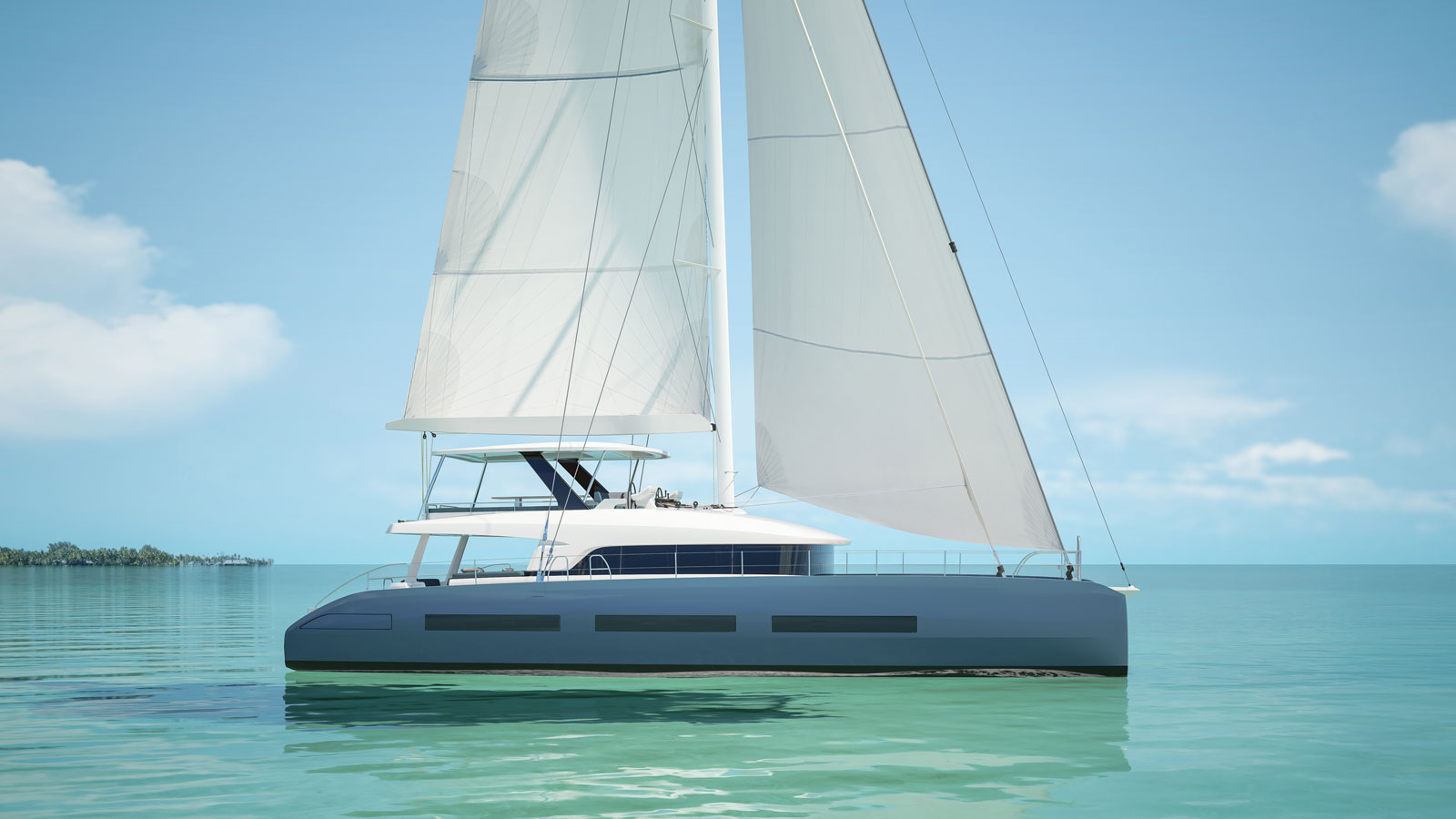 For the SEVENTY 7, even more than for the others, the mast being moved aft provides ease of handling combined with enhanced performance. In fact, the shortening of the boom makes gybing and reefing much easier; moreover, as the aspect ratio of the mainsail - in general terms the ratio of the luff to the foot - increases, the aerodynamic drag decreases.
For the SEVENTY 7, even more than for the others, the mast being moved aft provides ease of handling combined with enhanced performance. In fact, the shortening of the boom makes gybing and reefing much easier; moreover, as the aspect ratio of the mainsail - in general terms the ratio of the luff to the foot - increases, the aerodynamic drag decreases.
The centre of gravity of the entire rig being moved aft, the centre of buoyancy will move aft and reduce pitching, thereby improving both comfort and performance.
The ability to increment the foresail surface area enables optimal selection according to the weather conditions and the course.From a broad reach under an asymmetric spinnaker fora maximum downwind angle to the staysail for more demanding conditions or on a close-hauled course, by way of the code 0 and the genoa, all sailplans can be covered with considerableease of handling.
Convenience and performance were the values that guided us in the design of the SEVENTY 7’s sailplan.What counts is stress-free sailing at an average speed that enables you to discover new horizons. It is always difficult to make speed estimates, but we think that an average of 10 knots in 17 to 20 knots of wind is entirely realistic.Top speeds of 20 knots and more are certainly achievable in favourable swells with wind strengths that good memories are made of, those that we want you to experience safely and in the considerable comfort offered by this Lagoon.
By Marc Van Peteghem, naval architect of the SEVENTY 7
| Mast height: | 36,60 m / 120’1’’ |
| Sail area: | 337,4 m² / 3630 sqft |
| Standing rigging: | Kevlar |
| Running rigging: | Dynema |
| Genoa furler: | Harken hydraulique |
| Staysail furler (option): | Harken hydraulique |
| Main sail: | 207 m² / 2227 sqft |
| Genoa: | 130,4 m² / 1403 sqft |
| Staysail: | 81 m² / 872 sqft |
| Asymetrical spinnaker: | 500 m² / 5380 sqft |
| Code 0 : | 230 m² / 2475 sqft |

